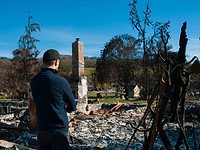Why Supervision is a Must in Every Estimate
Restorer's Digest

vm / E+ via Getty Images
If you have been in the restoration industry long enough, you know all too well that there is one issue that causes more grief and arguments between contractors and adjusters than almost any other; charging for supervision.
Supervision is something we all either perform or are subject to at some level in almost every aspect of our lives. Businesses have their tiers of upper and lower management, the military issues ranks and responsibilities to their members to lead and oversee duties and missions, insurance companies have their adjusters, supervisors, claims managers, examiners, and so on. Companies spend billions of dollars each year for qualified executive officers, managers and supervisors because they are integral parts of a business’s operation and survival. The restoration industry is no different, yet some in our profession treat supervision as a four-letter word and contend that it should be included in the contractor’s overhead or excluded entirely.
Interestingly, general contractors who build custom homes, commercial buildings, or do remodeling recognize the importance of supervision and project management and customarily put allowances in their estimates without any pushback.
Even government agencies understand the importance of supervision and have even gone as far as to make it a legal requirement. The State of California recently passed into law Assembly Bill AB830 which requires that contractors supervise their work. This law is found in the amended California Business & Professions Code § 7068.1, which states in part the following:
(a) The person qualifying on behalf of an individual or firm under paragraph (1), (2), (3), or (4) of subdivision (b) of Section 7068 shall be responsible for exercising supervision and control of their employer’s or principal’s construction operations to secure compliance with this chapter and the rules and regulations of the board.
(c) The following definitions shall apply for purposes of this section:
(3) “Supervision or control” means direct supervision or control or monitoring and being available to assist others to whom direct supervision and control has been delegated.
(4) “Direct supervision or control” means any of the following:
(A) Supervising construction.
(B) Managing construction activities by making technical and administrative decisions.
(C) Checking jobs for proper workmanship.
(D) Supervision on construction sites.
(d) The board shall require every applicant or licensee qualifying by the appearance of a qualifying individual to submit detailed information on the qualifying individual’s duties and responsibilities for supervision and control of the applicant’s construction operations, including, but not limited to, an employment duty statement prepared by the qualifier’s employer or principal. Failure of an applicant or licensee to provide information required by this subdivision constitutes a violation of this section.
(e) Violation of this section shall constitute a cause for disciplinary action and shall be punishable as a misdemeanor by imprisonment in a county jail not to exceed six months, by a fine of not less than three thousand dollars ($3,000), but not to exceed five thousand dollars ($5,000), or by both the fine and imprisonment.
Xactware addresses the issue of supervision in one of their white papers stating that supervision is NOT included in the overhead factors of an estimate and should be entered as a separate line item. (See https://getinsights2-data.s3.amazonaws.com/OverheadProfit_2-5-2020.pdf )
In my opinion, whether a restoration project is large or small, commercial or residential, complex or simple, the role of the supervisor is crucial and necessary for many reasons. Supervisors act as a shield against liability and are responsible to oversee the work and make sure the scope is followed. They are also tasked to keep the job on schedule and under budget, keep records, coordinate workers and subcontractors, trouble shoot problems, prevent accidents, ensure compliance with safety regulations and building codes, and much, much more.
A supervisor can be a foreman, superintendent, project manager, member of the company’s management staff, or even the company owners. Whoever it may be, his or her time is of great value and importance that should be compensated for.
Document the Need for Supervision
Whenever I write an estimate, I include detailed notes that explain why supervision is needed. Here is an example of what a note supporting the need for supervision may look like on a fire loss:
“Supervision time is required and is not included in the overhead and profit factors shown at the end of this estimate. For clarification of what is and what is not included in a contractor's overhead & profit, see Xactware's white paper that address this issue at: https://getinsights2-data.s3.amazonaws.com/OverheadProfit_2-5-2020.pdf
Supervision time will cover:
- Time to meet with building inspectors on-site for multiple inspections
- Time on site to coordinate subcontractors and workers
- Time on site to oversee the work and maintain safety standards and quality control
- Time to document the loss, write supplements, and correspond with adjusters
- Time to meet with owner to select finishes
- Time on site to accept deliveries of materials
- Time for the final walk through and punch list items
- Time on site for trouble shooting, etc.
This project will take approximately 40 weeks to complete. A supervisor will spend on average of 1 hour a day on site, 1 hour of travel to and from the project, and time at the office coordinating for a total of roughly 12 hours per week or 480 hours. In addition, when an inspection is needed, you are given a 4-hour window when the inspector may arrive, which means the supervisor has to wait up to four hours for each inspection. Some inspections do not pass the first time and require re-inspections. This project will require the following inspections: Rough framing, electrical, rough plumbing, roof nailing, insulation, drywall nailing, mechanical, exterior wrap, final inspection, etc. There will be approximately 10 inspections on this project, which will require additional time of 40 hours. The total supervisory time will be approximately 520 hours.”
Here you can see that if you multiply 520 hours times your supervisory labor rate, the total amount is significant. This alone may be the one item that can help your projects be more profitable. This is especially true if you have to pay franchise fees or managed repair program fees and are only allowed to charge 10% to cover your overhead.
If restorers took more time to explain the importance of supervision to their clients and colleagues, there would be a lot more consideration given to it.
Looking for a reprint of this article?
From high-res PDFs to custom plaques, order your copy today!






